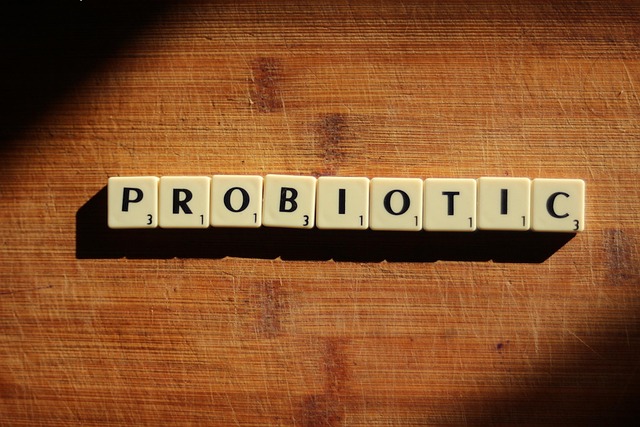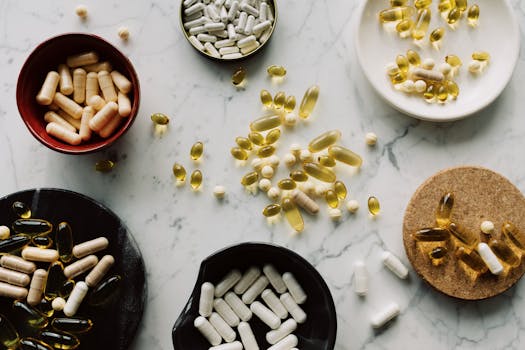Contact Us 720-964-1335 or 901-675-6125
Probiotics vs. Prebiotics: What Women Over 40 Need to Know for Gut Health & Weight Loss

A question I often get from women is, “What’s the difference between probiotics and prebiotics and do I need both?” It’s a fair question. The terms sound alike, they’re often sold side by side, and yet they do two very different jobs in your body. For women over 40 who are navigating hormone shifts, digestive changes, and stubborn weight, understanding how probiotics and prebiotics work together can be a game-changer. Let’s unpack the difference and why they matter for your health and weight loss journey.
What Are Probiotics?
Probiotics are live bacteria, the good kind, that naturally live in your gut. Think of them as tiny helpers that keep your digestive system balanced, your immune system strong, and even your mood more stable. When your gut bacteria are thriving, you’re less likely to deal with issues like bloating, constipation, and inflammation.
Probiotics are found in certain foods, especially fermented ones. Examples include:
- Yogurt with live cultures
- Kefir
- Sauerkraut
- Kimchi
- Miso
- Kombucha
They’re also available in supplements, which can be especially useful if your diet doesn’t regularly include these foods.
What Are Prebiotics?
If probiotics are the good bacteria, prebiotics are the food that keep them alive and well. Prebiotics are types of non-digestible fiber that travel through your digestive system to feed those healthy bacteria. Without enough prebiotics, probiotics can’t flourish, no matter how many you consume.
You’ll find prebiotics naturally in foods like:
- Garlic
- Onions
- Asparagus
- Bananas
- Oats
- Apples
- Chicory root
A diet rich in these fibers creates the perfect environment for your probiotics to thrive.
Why Both Matter for Women Over 40
Gut health impacts far more than just digestion. For women over 40, it touches on key areas like hormone balance, inflammation, metabolism, and even mental clarity.
- Hormones: The gut microbiome helps regulate estrogen levels. During perimenopause and menopause, this connection becomes more important.
- Inflammation: Poor gut health can increase systemic inflammation, which is tied to weight gain and chronic disease.
- Metabolism: A healthy gut supports better nutrient absorption, energy regulation, and reduced cravings.
As we age, stress, medication use, and hormonal shifts can all disrupt the gut microbiome. That’s why deliberately supporting it with both probiotics and prebiotics becomes so valuable.
Do You Need Supplements?
Food should always come first, but supplements can help fill in the gaps. For probiotics, look for a multi-strain formula with at least 5–10 billion CFUs (colony-forming units). For prebiotics, many supplements combine soluble fibers like inulin, but most people can meet their needs through diet.
Be mindful that not all supplements are created equal. Some are poorly manufactured, and not all survive the trip through your digestive tract. If you’re considering supplements, work with a professional to find one that makes sense for your body.
Practical Tips to Get Both
Supporting your gut doesn’t have to be complicated. Here are some simple, practical ways to get more probiotics and prebiotics into your day:
- Aim for at least one serving of fermented food per week.
- Add a banana, apple, or oats to your breakfast for natural prebiotic fiber.
- Cook with garlic and onions regularly — they’re easy flavor boosters.
- Try adding sauerkraut or kimchi as a topping to grain bowls, salads, or wraps.
- Increase fiber slowly and drink plenty of water to avoid digestive discomfort.
Coach’s Corner: Supporting Gut Health the FRESH Way
At Ample Health & Wellness, gut health is a cornerstone of how I help women over 40 lose weight and feel better. In my FRESH Framework, this falls under Food Freedom & Foundations and Honor Your Whole Health. Supporting your microbiome isn’t about cutting foods out, it’s about giving your body what it needs to thrive.
When your gut is balanced, weight loss becomes easier, cravings settle, and energy stabilizes. That’s why I guide clients through gut-friendly meal planning, personalized strategies, and lifestyle habits that nourish from the inside out. If you’re ready to move beyond confusion and start building your own gut-health plan, my workshops, programs, and book The Weight Is Over are a great next step.
Final Thoughts
The takeaway is simple: probiotics are the good bacteria and prebiotics are their food. You need both for a balanced gut. When you focus on gut health, you’re not just improving digestion, you’re also supporting hormones, metabolism, and long-term weight loss success.
So, the next time you hear someone talk about probiotics or prebiotics, you’ll know exactly how they work together, and more importantly, how they can support your health after 40.

References
- Gibson, G. R., & Hutkins, R. (2017). Expert consensus document: The International Scientific Association for Probiotics and Prebiotics consensus statement on the definition and scope of prebiotics. Nature Reviews Gastroenterology & Hepatology, 14(8), 491–502.
- Valdes, A. M., Walter, J., Segal, E., & Spector, T. D. (2018). Role of the gut microbiota in nutrition and health. BMJ, 361, k2179.
- Nagpal, R., & Yadav, H. (2017). Bacterial Translocation from the Gut to the Distant Organs: An Overview. Annals of Nutrition and Metabolism, 71(1–2), 11–16.
